Is Seiza a Real Samurai Fighting Position?
Clearing up the Many Misconceptions
By Paul 'Batman' O'Brien
B.A., N.C.E.H.S., Dip. Acu., Adv. Dip. OBB, Cert Clin. Med. Pn1, PN-SSR, PN-NCA, M.AFPA, M.ETCMA, M.C.Th.A.
Is Seiza a Real Samurai Fighting Position?
(The following is an updated thrid draft, with additonal images and extended discussion of samurai sitting postures, introduction and conclusion - the article still requires a little work - so comments and feedback are welcome below).
------------------------------------------
Index
- Why
- Part 1 - History
- Part 2 - Wearing Long Swords in Seiza
- Part 3 - The Jūjutsu Connection
- Part 4 - The ōmote-dō waza
- Part 5 -The Right Tool for the Right Job
- Part 6 - The Spiritual Connection
- Conclusion
-----------------------------------
A large criticism of the Musō Jikiden Eishin-ryū is the use of Seiza (正座 lit. 'proper sitting'), a seated posture, where the legs are tucked under the body with the feet, insteps flat on the floor, soles upturned and the buttocks resting above them. Many critics, the vast majority online are external observers of the ryū and not initiated into the inner teachings of the discipline, cite this posture as being a "dead posture that a samurai would not use" and secondly that they would not carry a long sword through their obi and sit in seiza.
In this article I intend to examine that connotation, as it is a primary argument used by those that claim contrary to the previous article that Musō Jikiden Eishin-ryū is not combat realistic in terms of authentic Japanese period fighting methods (which is a ludicrous suggestion in and of itself). As covered in my previous article, "Is Musō Jikiden Eishin-ryū Battle tested?". The ryū has a long history which encompasses several distinct periods of culture and warfare among the Samurai. And the Seiza posture is an excellent example of the confluence of those historical periods, realistic techniques, abstract strategy and religious philosophy.
But first, a word on those critics.
Why?
Many of these critics will rely on old discussion threads and forums, such as the epic E-Budo threads, which I love and still remain a source of excellent education. But these conversations took place in much earlier times. Many didn't have access to the documents, teachers and education we do today. Those studying these arts had limited resources and were relying on fragments of information and hushed comments.
Time has moved on and we know more. We've been taught more and people have researched , translated and published excellent English language histories, commentary's and academic papers, that provide information, insight and clarity to matters that were once confusing.
This leads me to the why of this article - most "debate" comes from those outside the style, those looking at a Youtube clip and making false claims and false assumptions. They speak with confidence about matters they do not understand or have knowledge of, and this in turn creates confusion, spreads misinformation and damages not just the reputation and study of the Musō Jikiden Eishin-ryū but in turn muddies the water for other legitimate koryū bujutsu.
This is not a new problem, it happens today. It happens in Japan and it happened on the old E-budo discussion forums too. In fact in one of the better discussions on criticism of the Musō Jikiden Eishin-ryū there is a quote from 2002, and from Carl Long Sensei, now head of the Masaoka-ha branch of MJER:
"There is much information available to those who wish to do a little research rather than speculate and provide false or misleading information. False information leads to misunderstanding and false confidence in those who profess to be experts in their fields of study". (1)
- Carl Long Sensei, Hanshi-ho
Of course, as I have said, these are old arguments and for the most part the most educated within the Ryū now have better things to do then debate what, are, ultimately trivial matters, on the internet. This is time that could be better spent training. But I'm not high up the chain yet, ;-) and can devote a little time to compiling the new information, old claims, and of course my own limited knowledge and perhaps stem the tide of misinformation with providing clear, researched and unambiguous answers to many a criticism of Musō Jikiden Eishin-ryū, and here I'll address those criticisms regarding seiza.
While there is an abundance of supporting evidence in the Japanese Language texts for the points I shall be making in this series, I shall be do my best to keep to readily accessible English language sources so that those interested and do not have access to the Japanese language or texts and who wish to independently verify the documents and quotes cited as support, can do so.
With that, let's begin...with history.
Is Seiza a Real Samurai Fighting Position? Part 1 - History
Seiza as a posture primarily developed after the Sengoku Jidai (戦国時代, "Age of Warring States"; c. 1467 – c. 1603), and the Ōmori-ryū (大森流), the Shoden school (opening initiation set of techniques), although practiced since its introduction in the early 1700's was only formally added to the Muso Jikiden Eishin ryū school in the 1900's. Seiza was not, nor was intended to ever be a position adopted by Muromachi Warring States Period Samurai - in fact I would go as far to say that sword techniques were not the primary focus of a samurai at all (for more on that see "Battle Tested?"). Seiza, is in fact, a seated posture that came about with the development of new internal technology, in particular the proliferation of the tatami mat and the popularity of the tea ceremony both of which contributed to vast social changes in etiquette and personal conduct.
The Ōmori-ryū Seiza no Bu School is named after its developer, Ōmori Rokurōzaemon Masamitsu (大森 六郎左衛門 正光), a student of the 7th Headmaster, Hasegawa Chikaranosuke Eishin (or Hidenobu)(長谷川主税助英信). Ōmori was expelled from the Musō Ryū at one point due to personal circumstances we have no knowledge of. During this time away from the Musō Ryū, Ōmori was a student of Ogasawara Ryū Reishiki (小笠原流) or etiquette and studied the Yagyū Shinkage-ryū (柳生新陰流) (Bishu) school of sword, which has an unbroken line stemming from Kamiizumi Ise-no-Kami Nobutsuna, (上泉伊勢守藤原信) (1508-1578) with the Yagyū line established by Yagyū Sekishūsai Taira-no-Munetoshi (柳生石舟斎平宗厳), (1527-1606). Within the Yagyu Shinkage Ryū were a set of five Iai techniques called the Saya-no-uchi Batto Gohon (2)(3). (*This term has since been questioned by Meik Skoss, and I am awaiting further clarification).
From these old feudal forms, and his knowledge of Muso Ryū, Ōmori developed a series of eleven Iai techniques, combined with the formal Seiza seating position of the Ogasawara School of etiquette. Eishin would later re-admit Ōmori to the Muso Ryū School for this innovation. Keep in mind this important fact as we go forward - the Ōmori techniques were a training innovation developed from Yagyu Shinkage Ryū, and Eishin Ryū Tatehiza no Bu, both late Muromachi period schools of swordsmanship. I'll touch on this influence a little later, but first let me give away one of those "not-secret secrets".....
The techniques don't teach you what you think they are teaching.
Before we go further I want to address a phrase...In Japan there is a term, "Omote and Ura". In the Japanese Swords arts, Omote is the front of the sword - the side that can be viewed while it is being worn. The Ura is the back of the sword that cannot be seen. However, as with all things in Japan and particularly within the old Japanese Sword arts there is a deeper meaning, an expression of In Yo (Yin and Yang). Omote is that which is revealed on the surface, the superficial understanding of a thing - it is Yang, bright and obvious. Ura is the deeper hidden meanings, the Yin, dark and concealed. This concept is applied to all aspects of life, from flower arranging to politics. The Omote of George Orwell's Animal Farm is that it is a book about talking animals. The Ura is that it is a deeply political allegory and dystopian critique novel on the destruction of Russia by Joseph Stalin.
Within the Japanese Martial arts, we often find a near never-ending rabbit hole of Ura within seemingly obvious Omote. For instance, within the Musō Jikiden Eishin-ryū Iai kata 浮雲 Ukigumo, we move from a seated position to step back, moving the handle of the sword away. The Omote is that the opponent is reaching for our sword and we are simply moving it out of his way. And that's true....but not the only truth. The ura is that this is an example of strategy known as mikoshi sanjutsu. We are creating a deliberate opening (suki) to lure the enemy into making a specific movement so that we can attack in a particular way. By controlling the opponent's perception and intentions we can force his movement without his realisation and thus create an opening that we can exploit.
Another expression may be that in a kata you are stepping forward or turning to the left. Whereas in the actual technique applied in reality and in combat, you may actually be stepping back or to the right. A cut that you are taught is a block may in fact be slice to your opponent's femoral artery at a weak point in the armour. Of course, the deeper level of this is how it is applied outside of swordsmanship in the world outside the dojo.
But for the purpose of this series it is vital to recognise that what you see presented to you on the surface isn't the whole story. The nice shop front may hide a crumbling building, the honest PR of a company hides rampant corruption, the pretty blonde girl who giggles a lot may actually be a nuclear physicist. Heck, the Omote of Dolph Lundgren is that he's a dumb wooden muscle bound actor, but in fact (Ura) was selected for a Fulbright Scholarship and has a master's degree in chemical engineering!
It is this Ura understanding that is revealed to the initiate in the study of Musō Jikiden Eishin-ryū. With this in mind, let's examine, the first criticism of the Seiza Forms.
Is Seiza a Real Samurai Fighting Position?Part 2 - Samurai would not have worn long swords when sitting in seiza.
"Samurai would not have worn long swords when sitting in seiza!"
This is the number one go to criticism for the seiza forms, and surprisingly the most easily shown to be an absurd fallacy. One of the criticisms of the Musō Jikiden Eishin-ryū style is that the long sword would not be worn through the obi in seiza. This is untrue, for a start, many samurai would sit in seiza in the Edo period, as it became increasingly popular and they would also wear long swords while doing so. As Kim Taylor Sensei, Nanadan, hilarious points out in his book;
"The samurai did wear his long sword when seated. He wore it when he practiced Ōmori-ryū Iai. At the time the art might have been termed Batto-jutsu, Iai-jutsu or some other name but since the term Iaido did not become popular until the 1930s and since the common people in the Edo period did not practice swordsmanship, the 'Samurai' most certainly practiced Iai-'jutsu' from 'seiza'." (4)
- Kim Taylor Sensei,
Kim's Big Book of Iaido Volume 3, Sei Do Kai publications, 1997, pg.3
While Taylor Sensei is being perhaps a bit facetious, he is entirely correct. From the introduction of the Ōmori-ryū Seiza no bu in the early 1700's until the abolishment of the Samurai as a class in 1876, for over 100 years, Samurai wore and used a long sword while in seiza. When practicing Ōmori-ryu.
However, there were other occasions where the samurai wore a long sword while in seiza during the Edo period and prior to it. For instance;
"Among the Japanese nowadays there are several who find it a little strange to sit down in seiza while wearing a sword. This is because most Japanese have forgotten that before the Meiji period it was absolutely normal. Samurai sitting down carrying a sword are depicted in numerous books and paintings of the time. For example, let us take a look at the following story of the samurai Okubo Hikosaemon Tadataka (1560-1639), who was in the service of Tokugawa Ieyasu.
Tadataka had a very long sword, measuring about 109cm. Everybody complained about this, saying that his sword was a nuisance to others when he wore it in the assembly hall of the castle because it hit the surrounding people when it was crowded. So they demanded of him to make the sword shorter, upon which Tadataka, taking the hint, returned home. The next day when, when he revisited the castle, he had cut off about 21-24cm of his scabbard letting the sharp blade protrude out of it. He then dragged along his sword through the castle cutting cloths and tatami wherever he went or sat down" (5). (in seiza is specified in the Japanese)
- M. Yamakoshi Sensei
In numerous castles in Japan dioramas depict Daimyō (大名) (feudal Japanese Lords), overseeing a court, with multiple officials wearing short swords, and the bodyguards of the Daimyō wearing katana, while sitting in seiza as the above story alludes. Other examples are given in Yamakoshi Sensei's text and through the oral traditions of the Musō Jikiden Eishin-ryū. Yamakoshi Sensei also alludes to the many classical images including those spanning the Muromachi and early Edo Periods depicting these. For you convenience I have collected several such images and present them below.
But it was also not unusual in cases of 上意討 Jōiuchi - this is where a samurai would be ordered to take someone into custody or execute/assassinate someone, and there are multiple kata in the Musō Jikiden Eishin-ryū school dealing with such situations as I'll discuss later.
For now, examine the photo below. The scene depicted in this scroll, from the Hyogo Prefectural Museum, is of samurai swearing loyalty to a Daimyō. The Daimyo's bodyguards to the right are armed, with tachi (signified by the length and curve of the long blade, as well as the time period). I have circled in red the closest one to the viewer. He is seated, with a long sword, in seiza. We know this because we can see the edges of this feet, circled in blue.
The Samurai sat in many positions throughout their history, Iidori, also called kiza (跪座 / 跪坐, 起坐), a posture similar to seiza, where the feet rest on the toes not the instep, which I shall cover in Part 3 , agura (胡座 / 胡坐) a crossed leg position, common in the Muromachi period while wearing yoroi (鎧, armour), and tatehiza, a half-kneeling position, where one leg is raised with the other tucked, and iai-goshi, which is modified s that the tucked leg is resting on the flexed toes and of course, seiza. In some historical paintings and woodblocks you can see nearly all of them, including seiza in the one picture.
For instance below you will see a series of early Edo period depictions of the great Sengoku period general Takeda Shingen (武田 信玄, December 1 st 1521 – May 13th 1573), and his celebrated 24 generals. This assortment of images shows his armoured and armed samurai wearing daisho, carrying bo's and sitting in a variety of positions, including sieza. For those of particular interest I have provided additional close-up images.
Is Seiza a Real Samurai Fighting Position?Part 3 - The Jūjutsu Connection
A professional soldier, a warrior or martial artist (and the three are not the same thing) is generally expected to be capable to responding to violence in a wide variety of situations. Many of these situations involve self defence or combat in social situations that suddenly become asocial very quickly. Considering that in the late Muromachi period and into the Edo period the adoption of seiza and positions similar to it, became more common place it is only natural that combative strategies were developed to address these issues.
Perhaps the best example of this is Takenouchi Ryū (竹内流), considered one of the oldest schools of jūjutsu extant today. Founded in the late Muromachi period in 1532 by Takenouchi Chunagon Daijo Hisamori, the school has a large range of techniques performed from a posture similar to seiza but with the toes raised, a posture called iidori or kiza. Many of these jūjutsu forms involve attacks and defences with small daggers or short swords. The school also includes Iai techniques, as do other schools such as the Katayama Hoki Ryū ( 伯耆流). Hoki Ryū, is today seen primarily as an Iai based art - however it did include many jūjutsu forms.
"Another early jūjutsu school that includes both kogusoku and iaijutsu is the Sekiguchi Shinshin Ryū founded by Sekiguchi Ujimune Jūshin. As far as iaijutsu Jūshin too was a student of Hayashizaki Jinsuke. The techniques of kogusoku koshi no mawari, including the seated versions were developed by experienced warriors out of a practical necessity".(6)
- Serge Mol
Classical Swordsmanship of Japan; A Comprehensive Guide of Kenjutsu and Iaijutsu
Over time, the toes raised stance of iidori shifted to accommodate
the indoor surfaces martial arts were now training in, and to accommodate
longer, less injury causing training sessions:
"Why the shift to seiza, which is an exclusively indoor posture, rather than iidori which is an anywhere posture? (Note, BTW, that some very rugged styles, made that shift within the past few generations - it's not necessarily hundreds of years old).
I believe the following:
1) It is an extension of the principle I mentioned earlier - formalizing the training scenario. Iidori is NOT a way of sitting, per se - it's a "stance" on the knees. You are never asked to "sit down," and because of a certain level or lack of formality, choose to assume that posture. As practice was done indoors, and the meaning of the forms began to become attenuated, shifting to seiza made "sense" as that codified the stance into an appropriate way of sitting inside, where practice was almost exclusively done.
2) Those who were moving in the direction of cultivation naturally moved in the direction of seiza - quietude.
3) Iidori hurts the feet. Not only non-Japanese. It is the world's worst for those who have a tendency to get those bone-deep cracks at the base of the toes in the joints, during winter. Iai as a many hour practice, rather than a subsidiary practice within a weapons/grappling system was a new idea - seiza was probably shifted into to be able to tolerate the repetitive, conceivably many hour posture.
But the basis has to be from combat - you are on the ground for some logical reason - because the initially very practical Japanese fighter started from that - in the same manner as the blood-and-guts crude rolling on the ground with weapons of such systems as kogusoku and koshi-no-mawari became the refined system of Daito-ryu which became, eventually aikido" . (7)
- Ellis Amdur
What relevance is this to the Musō Jikiden Eishin-ryū and the problem of seiza?
Well, this harks back to the ignorance of commentators outside of the Ryū, as another criticism often levelled at Musō Jikiden Eishin-ryū is that it is a solo iai art - again this is fundamentally untrue. Paired work actually makes up the majority of the school's teachings. The solo kata / waza of the school from the Sezia no bu to the Bangai no bu comprise of 46 techniques, not including henka or variations. This is the bulk of material most students are familiar with, but that is not the end of the school's teachings.
There are in fact several other techniques sets, paired waza (kumitachi, 組太刀) which are taught only to advanced students after many years of study, if at all. These advanced sets, beginning with the Tachi Uchi no Kurai, feature grappling, striking, and disarms against a live opponent, and use both long (ōdachi) and short (kodachi) swords. These set's contain the;
- Tachi Uchi no Kurai (太刀打之位), featuring 10 forms
- Tachi Uchi no Kata devised by Ōe Masaji featuring 7 forms
- Tsume Ai no Kurai (詰合之位) featuring 10 forms (or 11 depending on teacher)
- Daishō Zume (大小詰) featuring 8 forms
- Daishō Tachi Zume (大小立詰) featuring 7 forms
- Daikentori (大剣取) featuring 10 forms
This represents a total of 53 paired forms, not including variations, of which there are many. For instance, 出合 Deai, the first form of the Tachi Uchi no Kurai has at least 17 distinct variations that I am aware of. Thus in the extant line since of Oe Masaji, there are more paired forms (53) then solo forms (46).
If we look at the historical curriculum it becomes even more interesting. The historical curriculum, according to the Musō Jikiden Eishin-ryū Iai Heiho Chi no Maki" (Earth Book of MJER Iai Heiho) written by, Masaoka Katsukane (Kazumi) states;
"This curriculum is according to the Shinden Ryū Hissho (Secret Scrolls of the Shinden Ryū) redacted by the 13th headmaster of the Shimomura-ha, Yamakawa Yukio (the 2nd generation after the Tanimura-ha/Shimomura-ha split).
- Ōmori-ryū Iai no Koto, Batto no Shoden, 11 forms from seiza
- Eishin Ryū Iai no Koto, Batto no Chuden, 10 forms from iaihiza (tatehiza)
- Tachiuchi no Kurai, 10 forms standing, daito vs. daito
- Tsumeai no Kurai (Shigenobu Ryū), 10 forms in iaihiza, daito vs. daito
- Daishozume (Shigenobu Ryū), 8 forms from iaihiza, shoto vs. daito (daito wins)
- Daisho Tachizume (Shigenobu Ryū), 7 forms standing, shoto vs. daito (daito wins)
- Daikendori, 10 forms total, 4 forms shoto vs. daito (shoto wins), 6 forms daito vs. daito
- Batto no Okuden (Shigenobu Ryū), 10 forms from iaihiza, 12 standing forms.
- Itabashi Ryū Bojutsu, 5 forms bo vs. bo, 8 forms sword vs. bo
- Natsubara Ryū Yawara: a. Yawara no Kata, 10 forms, b. Tachiai Kaisogake, Yawara no Kata, 10 forms, c. Kogusoku, Yawara no Kata, 11 forms (in these forms, both participants are seated in an "iaigoshi" posture, on their toes with left knee down and the right knee up), d. Ato Tachiai, Yawara no Kata, 11 forms, e. Kogusoku Wari, Yawara No Kata, 10 forms, f. Honte no Utsuri, Yawara no Kata, 11 forms"(8)
From this list we can gather, that there are
- 43 solo iai kata,
- 45 paired forms (kumitachi),
- 13 bo forms and
- 63 jūjutsu forms.
63. That represents the largest school or body of techniques in the Ryū. Now we do not have those 63 forms today, but I would suggest several of them involved moving from seiza and tatehiza. I base this on the current teachings of the school.
Grappling with the facts
Just a cursory examination of a higher level understanding of the solo forms, just examining 前 Mae - the very first of these forms, from the seiza position, there are at least 8 jūjutsu techniques associated with that form, with further elaborations I am not counting here, on dealing with tanto or wakizashi. These include blocking the opponents arm when in chikama (close distance), tōma (far distance), crossed arm grappling, etc. These can all then be applied to the next 3 forms.
The 5th form of the Ōmori Ryū, Yaegaki, contains no less than 9 jūjutsu techniques within the teachings of the kata, including the "5 Methods of Resolving the Valley"(9).
This trend of comprehensive jūjutsu techniques continues through the Ōmori-ryū to the Okuiai and is examined further in specific paired kata such as the Daishō Zume, Daishō Tachi Zume and Daikentori. Those three jūjutsu sets all begin from tatehiza (a very differing seating posture to seiza) or standing. These techniques further inform the solo waza.
Suffice to say there is an extensive background of jujutsu within the school and it is no surprise then that Iai techniques from seiza would have developed in the tradition. There is another telling detail provided in this examination of the curriculum of the Muso Jikiden Eishin Ryū - the seiza posture is NOT representative of the ryū.
The Muso Jikiden Eishin Ryū comprises, not including variations, henka waza etc, a syllabus of 99 techniques currently being taught, and at least 164 techniques in the older syllabus. Out of 99-164 techniques there are only 13 performed in seiza...and I could argue that there are only 11 (暇乞其Itomagoi being counted as 1 form with 2 variations). In Modern terms that's indicates only 11% of the syllabus begins in seiza. In classical terms that's only 6.7% of the syllabus which begins in seiza - hardly indicative of the ryū.
So why seiza at all, considering that every kata in the seiza syllabus, with one exception, is later shown in a more advanced format either in tatehiza, a recognized feudal battlefield and samurai posture or standing?
Is Seiza a Real Samurai Fighting Position?Part 4 - The ōmote-dō waza
The key word here being, 'advanced'. Nearly every headmaster and senior instructor since the introduction of the seiza no bu in the 1700's acknowledges it is a way to practice and condition the body in preparation for the forms of the school - chiefly the Eishin Ryū and Shigenobu Ryū. Ōmori-ryū thus is a form of Tanren - for conditioning the body to allow us, those not professional warriors, to develop the strength in muscle and connective tissue, breathing patterns, physiological and psycho-emotional patterns and connections to be able to perform the later movements at the heart of the school. This is why Oe Sensei would later make the Shoden waza of the school - the initiation set.
"From the point of view of the Hasegawa tradition, this is what is termed an ōmote-dō kata series of forms designed to teach the novice deshi the basic principles of physical movement, regulated thinking, proper breathing patterns and, in the longer term, something of the principles that they will encounter later in the three upper levels. It will, in other words, bring the student to a reasonable degree of proficiency". (10)
At no time is anyone in a position of authority of the school, or initiated into the ryū asserting this small percentage of the school, was reflective of battlefield Japanese combat - it would be akin to saying ladder runs are reflective of the footwork of American Football, or that skipping is reflective of a boxing match. It is a tool for conditioning....with that said, it reflects the combative applications of later Tatehiza-no bu forms that inspired it....and at the same time address another criticism of the Musō Jikiden Eishin-ryū.....
Is Seiza a Real Samurai Fighting Position?Part 5 - The Tool for the Right Job
As noted above, many of the kata of other styles using an iidori posture, such as the Takenouchi and Hoki Ryū, did so while wearing tanto or wakizashi. Seiza is a seated formal posture, one in which it is unlikely (though as we have seen not impossible) that one would be wearing a long sword....so now I'd like to share with you another of the Ura teachings in Musō Jikiden Eishin-ryū...
The sword you use to practice the kata isn't necessarily the sword you use to do the kata.
Omote, meet Ura. From the outside
a casual internet troll derides the Musō Jikiden Eishin-ryū from practicing
forms in seiza with a long sword. Demanding that if a samurai were seated in
seiza they would not have access to their long sword. As we've seen above that
isn't always true, however it certainly was a vast majority of the time. In Edo
period Japan, a samurai sitting in seiza one would be more than likely wearing a tanto or
wakizashi. Or in the case of students of the Musō Jikiden Eishin-ryū, an armour
piercing yoroi-dōshi (鎧通し).
And yes, we practice the Ōmori-ryū Seiza no Bu forms using a katana, a long sword, while in seiza. And of course the casual observer screams with all their righteous indignation that this is proof that the style is not "combat realistic" or even historically accurate. But then, they don't know the ura of the forms do they? ;-)
"According to tradition within the Ryū, it was precisely the lack of combative understanding encountered by Master Ōmori amongst many of his young students in the late-seventeenth century that prompted him to devise this series" (11)
- Roald Knutsen, Eishin Ryū Menkyo Kaiden
One of the ura teachings on Yaegaki, the 5th form of the Ōmori-ryū concerns the use of a kneeling walk, specifically for use during indoor execution in a lords castle - it is further suggested this technique be performed with a wakizashi, as should all of the techniques within the style.
"...when a person has received the order to absolutely kill someone during a meeting when everyone is sitting he down, he cannot just stand up and walk towards him, or stand up after completing nukitsuke, for the victim, of course, but also the other people around him might get roused......by going on the knees, as low as possible, the attacker can approach his victim and do the job without being noticed or obstructed....in the situation described above the attacker would probably be using a wakizashi ....This reminds us that the practice of iaijutsu is not only restricted to long swords....
..Therefore, when you are not in possession of your sword (because you gave it away for sharpening for example), it is recommended to practice with a wakizashi instead of with a replacement sword" (12)
- M. Yamakoshi Sensei
Within the oral teachings of certain ha's in the Musō Jikiden Eishin-ryū we are told to cultivate a "wakizashi spirit", which is to be applied to all techniques.
The first four forms of the Ōmori-ryū all contain teachings regarding wakizashi and tanto, including multiple defences and counters. The later advanced forms of the ryū deal with a multitude of different weapon combinations including wakizashi, tanto and odachi, the school is not unfamiliar with shorter weapons. Within the Compendium of Samurai Regulations of 1618 it states in regards to the 7th form of the Ōmori-ryū that "Long swords are not suitable for executing Kaishaku..."
Teachings in certain Ōmori-ryū forms are designed to teach sword techniques while being mounted on horseback, and contain teachings that relate to the use of a tachi on horseback, and modifications to a katana for the same purpose, invoking the kamome-yō method (Sea-gull Style) or tenjin-zashi method, or "Carrying the sword in the style of the Heavenly Deities". (12)
And this makes complete logical sense when you keep in mind that the Ōmori-ryū Seiza no bu, were derived from the Muromachi period techniques of Eishin Ryū Tatehiza-no-bu and the Yagyu Shinkage Ryū Saya-no-uchi Batto Gohan forms, modified to provide introductory teachings and physical conditioning.
Finally there is one other point I'd like to make regarding the Ōmori-ryū Seiza no Bu, which at first glance may seem to contradict everything I've just written - I'd like to briefly discuss the spiritual reasons for the forms inclusion.
Is Seiza a Real Samurai Fighting Position?Part 6 - Spiritual Significance
As detailed in my 2 books on Samurai Philosophy there is an extensive amount of religious and spiritual significance in the practice of Iaido and koryu bujutsu; with aspects of Buddhism, Confucianism, Shinto, and Taoism all influencing the development of the kata and the thinking behind them. Some of these spiritual and religious concerns can be best seen in the Seiza no Bu.
For example, coming back to The 5th form of the Ōmori Ryū, Yaegaki, in which previously we had examined one of its many teachings where you have been ordered to execute someone (which is in keeping with the overall assassination theme of the school, covered in my other articles), we can also examine the many layers of Taoist religious philosophy embedded in the kata. Omote and Ura as we touched on earlier may be seen as a reflection of Yang (Omote) and Yin (Ura).
There are several examples of Yin (In) and (Yang) Yo in the teachings of Musō Jikiden Eishin-ryū. In fact, the very heart of Iai could said to represent In and Yo. As is written by Yamakoshi Masaki and Tsukimoto Kazutake in the Oral Teachings of the Musō Jikiden Eishin-ryū....
"The state of the sword being sheathed in the scabbard (saya) is like the complete silence of the Supreme Principle (taikyoku). As long as the sword stays sheathed in the scabbard the elements in yin and yang form one unity. The very moment the seal on the koikuchi is broken Heaven and Earth and everything in between start to take their positions, and when the sword slays the opponent in two and victory is achieved, it seems that from the beginning the Divine Truth (shimmei) already existed in the saya. Hence even before drawing the sword and cutting the opponent in two, the positioning of Heaven and Earth and the revelation of the truth was already lying hidden in the saya". (13)
- M. Yamakoshi Sensei
Of course, direct examples also appear, and Yaegaki was once known by the old name Inyo Shintai (Yin & Yang Movement).....this refers to the physical expression of In and Yo in the kata. First the kata can seen as being in two parts; an attack and defence, however on a deeper level, explained only to direct students, is that this form contains the ability to summon a kami (Shinto spirit deity) and use it for defensive purposes....
Further, it has a connection to other aspects of Japanese culture too (an important aspect of all koryu) and one noted by Deborah Klens-Bigman Ph.D and student of Iai....
"Seiza teaches other important things, for example (often equally incomprehensible to most Americans, at least) - manners. Sitting in seiza demonstrates respect - to fellow iaidoka, teachers and the tradition of iaido itself.
Seiza is a physical link to the Japanese traditional past, which created and refined the art form over 400 years. Seiza is more than a beginning iaido posture for basic kata. It is part of what Japanese scholars refer to as "seiza bunka" - seiza culture, which includes other classical art forms, like calligraphy, tea ceremony, flower arrangement, even noh and kabuki theatres.
Seiza teaches respect, and also (well known to those who've tried it) humility. It sounds like a cliche, but barring some actual physical impediment, I can gauge the depth of a student's interest in learning iaido by their willingness to adapt and maintain this posture in class.
As those who have struggled with seiza, let alone iaido kata, know, patience is another lesson of practice. While one could say this about nearly every endeavor, the iaidoka becomes, and stays, well-acquainted with her limitations throughout the time of practice, whether for months or years or a lifetime". (14)
- - Deborah Klens-Bigman, Ph.D
This is further supported by the comments of Sekiguchi Komei Sensei, head of his line of Musō Jikiden Eishin-ryū, as related by Colin Hyakutake Watkins, menkyo kaiden;
"Seiza is a Japanese peaceful posture. We sit like this to drink tea, and talk to one another. All the most important things are decided upon when sitting in seiza. By sitting in seiza we are showing other that we are peaceful and do not wish to offend.
If...... the possibility arose that we would have to draw the sword from seiza we should be able to do it proficiently. But essentially its to teach us to be at peace" . (15)
- Colin Hyakutake Watkins, Menkyo Kaiden
Finally, some thoughts from Kim Taylor Sensei;
"Spiritually, the student begins and finishes in the most humble possible position, one that is close to the floor. The position is vulnerable to attack and therefore can't be aggressive as can kiza or tachi ai. Moving up to a standing position from seiza requires great leg strength, giving the student a good root into the ground. Sitting solidly in seiza allows the student to know what that root should feel like while standing.
The list of benefits is long, think about all the instruction you have ever received in Iai, almost all of it can be examined in the Ōmori-ryū ". (16)
- Kim Taylor Sensei, Nanadan
Such inherently religious and philosophical traits are not foreign to the school, the earliest documents of which are of a religious nature, and it is not a surprising fact to find deep philosophical, religious and spiritual tones within the Seiza no bu.
With all this in mind, it also touches upon another fundamental aspect of Koryu Bujutsu and how the Musō Jikiden Eishin-ryū relates to this. But why is this important?
"In the true koryu traditions, culture and technique are part of a cohesive whole that includes the headmaster, traditional licenses, and a unique code of behaviour. While there's no question that it is possible to learn/teach just the techniques of a koryu in isolation from the rest (and there are those who are doing this--the open seminar format, so popular in the West is a good example), the result is, in my opinion, a mere parody of the rich wealth, both technical and spiritual, found in these ancient traditions" (17)
- Diane Skoss Sensei
As I have noted extensively in other articles and touched upon here, there are more to koryu than just the techniques. There are the intrinsic religious and spiritual beliefs of Shintō, Taoism, Confucianism and Esoteric Buddhism, woven through the fabric of every technique. To explain just a superficial understanding of these took me two books! ;-) This is how deeply embedded into the fabric of the koryu these idea's are not to mention the societal and historical influence's brought to bear upon the koryu.
We've already seen an example of this in Ōmori-ryū Seiza no bu as reflective of "seiza bunka", but also in the manner in which the student and teacher interact is very much predicated on the intrinsic understanding of Neo-Confucian ideals of societal conduct, in particular the aspect of Li. The manner in which a class is taught, the method by which the techniques are categorized, is deeply influenced by Mikkyo Buddhism and Confucianism. The layout of the dojo (a Buddhist concept in origin) is today heavily influenced by Taoist teachings. The kamae, the stances taken in koryu swordsmanship, often outside of the tactical considerations, are frequently used to signpost or indicate a mental emotional consideration or spiritual technique of Buddhist relevance.
Is Seiza a Real Samurai Fighting Position?Conclusion
To Summarise then, is Seiza a Real Samurai Fighting Position? Yes, in a sense, but like the koryu themselves a simple sitting position such as seiza is layered with depth and meaning, as is the school from which it takes it name. With regards to the objections to seiza and the consistent admonishment by those outside of the Musō Jikiden Eishin-ryū that seiza shows that the ryū is not a koryu or reflective of feudal period Japanese swordsmanship I would ask them to reflect on the following points:
1. The Samurai wore their long swords in seiza in certain situations like Joiuchi, bodyguarding and of course, when practicing the Ōmori-ryū
2. The posture of seiza is an Edo period modification of accepted Muromachi period posture such as iidori and this is in keeping with the high level of jūjutsu within the curriculum.
3. The seiza posture taken during Ōmori-ryū Seiza no bu teaches important principles and techniques applicable in formal Edo period setting where a wakizashi, tanto or yoroidoshi would have been worn.
4. Within the Ōmori is an introduction to the techniques and principles of Muromachi period, feudal Japanese combat, from which the Ōmori have been inspired.
5. The seiza posture affords useful teaching points and assists with the correct physiological patterns required for the core teachings of the style.
6. The posture of seiza is not reflective of the Musō Jikiden Eishin-ryū, given that it comprises between 6.7% - 11% of the total curriculum.
7. Koryu Bujutsu are not solely concerned with combative function. They are layered with spiritual, religious and philosophical teachings and the seiza posture imparts specific spiritual teachings to the students of the ryū separate to any concerns one may have about "realistic combat".
Within all this in mind, the meaning and purpose of the Ōmori-ryū Seiza no bu becomes evident and is perhaps best summed up by own teacher, Peter West, Nanadan, Kyoshi, when discussing some of the oral transmission teachings:
"Ōmori-ryū Seiza no bu is kihon. It was necessary as part of their training to be able to draw a sword in any anticipated place or position. Okuden forms use walking and sitting in tatehiza, with restrictions such as no space at the side, walking through a gate and so on. In later times as sitting in seiza became more popular it became logical to develop ways of drawing from this new position, both to employ it's strengths and understand its weaknesses. (e.g. in tatehiza it is very easy to stand and step backwards in a single move, or to stand and turn in a single move, and this is often used, but in seiza these things are impossible, so it was necessary to learn how to minimise the dangers of these situations). It is therefore logical that all kata using seiza exist only in the newest sets (mostly shoden, and very few in chuden and okuden) ". (18)
- Peter West Sensei, Nanadan, Kyoshi
The Ōmori-ryū Seiza no bu is kihon. Fundamental. It is, as Ōe Sensei and Ōmori Sensei intended it to be - a fundamental introduction to the teachings of the Musō Jikiden Eishin-ryū. It is here, in these forms that the student learns shisei (posture), kamae (stance), koryū (breathing), chakugan (eye contact), metsuke (vision), maai (distance), kihaku (focus and power), reshiki (etiquette) and zanshin (spirit/awareness), along with the key basics of how to grip and use a sword. And this is deeply important.
I remember an old story, doubtless told in many a dojo, that has always been dear to me. I was told, "You can tell how long someone has been doing Iai by the kata they practice on when no one is looking. The beginners practice Mae, because it's the only one they know. The intermediate students practice the Eishin Ryu and Oku Iai, 'cause they are flashy and cool. The seniors....the seniors all practice Mae, because it's got everything you need and you can never do enough kihon".
"The importance of kihon can not be overemphasized. Without sound fundamentals - all working together flawlessly - you will not be able to perform iaijutsu techniques or waza with grace and precision. Further more, from a technical standpoint, until you have truly mastered the fundamentals, you will not be able to generate sufficient power, control, and accuracy to cut effectively". (19)
- Masayuki Shimabukuro Sensei, Hachidan Hanshi
The fundamental importance of kihon can not be overemphasized, and the Ōmori-ryū Seiza no bu are the kihon of the Musō Jikiden Eishin-ryū, and thus their importance can not be overemphasized. The seiza posture is a first introduction into a larger, deeper world; A spiritual and philosophical connection to Japanese culture and history; and our most important tool to train and develop the mind, body and spirit to understand and effect the techniques of older times.
References
- Long, Carl. "Origin of Iai arts". http://www.e-budo.com/forum/showthread.php?9713-Origin-of-Iai-arts/page3 (retireved 17/5/17)
- Taylor, Kim. Kim's Big Book of Iaido Volume 3, Sei Do Kai publications, 1997, pg.3
- Lowry, Dave. Autumn Lightning: The Education of an American Samurai, Shambhala, 2001, pg. 104.
- Taylor, Kim. Kim's Big Book of Iaido Volume 3, Sei Do Kai publications, 1997, pg.3
- M. Yamakoshi and K. Tsukimoto, Muso Jikiden Eishin Ryū: The Oral Traditions of the Yamauchi Branch, Kyoto, Maruzen, 2004 pg.15
- Mol, Serge. Classical Swordsmanship of Japan; A Comprehensive Guide of Kenjutsu and Iaijutsu, Eibusha 2010, pg.189
- Amdur, Ellis. http://www.e-budo.com/forum/showthread.php?18536-Why-is-Iaido-practised-from-kneeling/page3&highlight=Seiza (retrieved 15/5/17)
- Kasumi, Masaoka. Musō Jikiden Eishin-ryū Iai Heihō Chi no Maki, private publication, 1974
- M. Yamakoshi and K. Tsukimoto, Muso Jikiden Eishin Ryū: The Oral Traditions of the Yamauchi Branch, Kyoto, Maruzen, 2004
- Knutsen,Roald. Sun Tzu and the Art of Medieval Japanese Warfare, Global Oriental, 2006, pg. 46
- Ibid.
- M. Yamakoshi and K. Tsukimoto, Muso Jikiden Eishin Ryū: The Oral Traditions of the Yamauchi Branch, Kyoto, Maruzen, 2004, p. 64
- M. Yamakoshi and K. Tsukimoto, Muso Jikiden Eishin Ryū: The Oral Traditions of the Yamauchi Branch, Kyoto, Maruzen, 2004, p. 66
- Ibid.
- Klens-Bigman, Deborah, Ph.D. The Study Of Iaido, http://www.fightingarts.com/reading/article.php?id=207 (retrieved 16/5/17)
- Hyakutake Watkins, Colin, http://www.e-budo.com/forum/showthread.php?18536-Why-is-Iaido-practised-from-kneeling/page2&highlight=Seiza (retrieved 16/5/17)
- Taylor, Kim. Kim's Big Book of Iaido Volume 3, Sei Do Kai publications, 1997, pg.4
- Skoss, Diane; "A Koryu Primer" http://www.koryu.com/koryu.html (retrieved 27/2/17)
- West, Peter. Private correspondence May 2017
- Shimabukuro, Masayuki. Flashing Steel, 2nd Edition, Blue Sank Books California, 2007.
Click here to Return to the Way of the Samurai Home Page
Free Samurai E-books
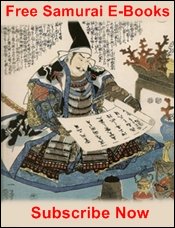
Get Free Exclusive Samurai Guides and E-books
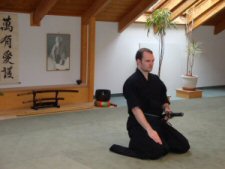

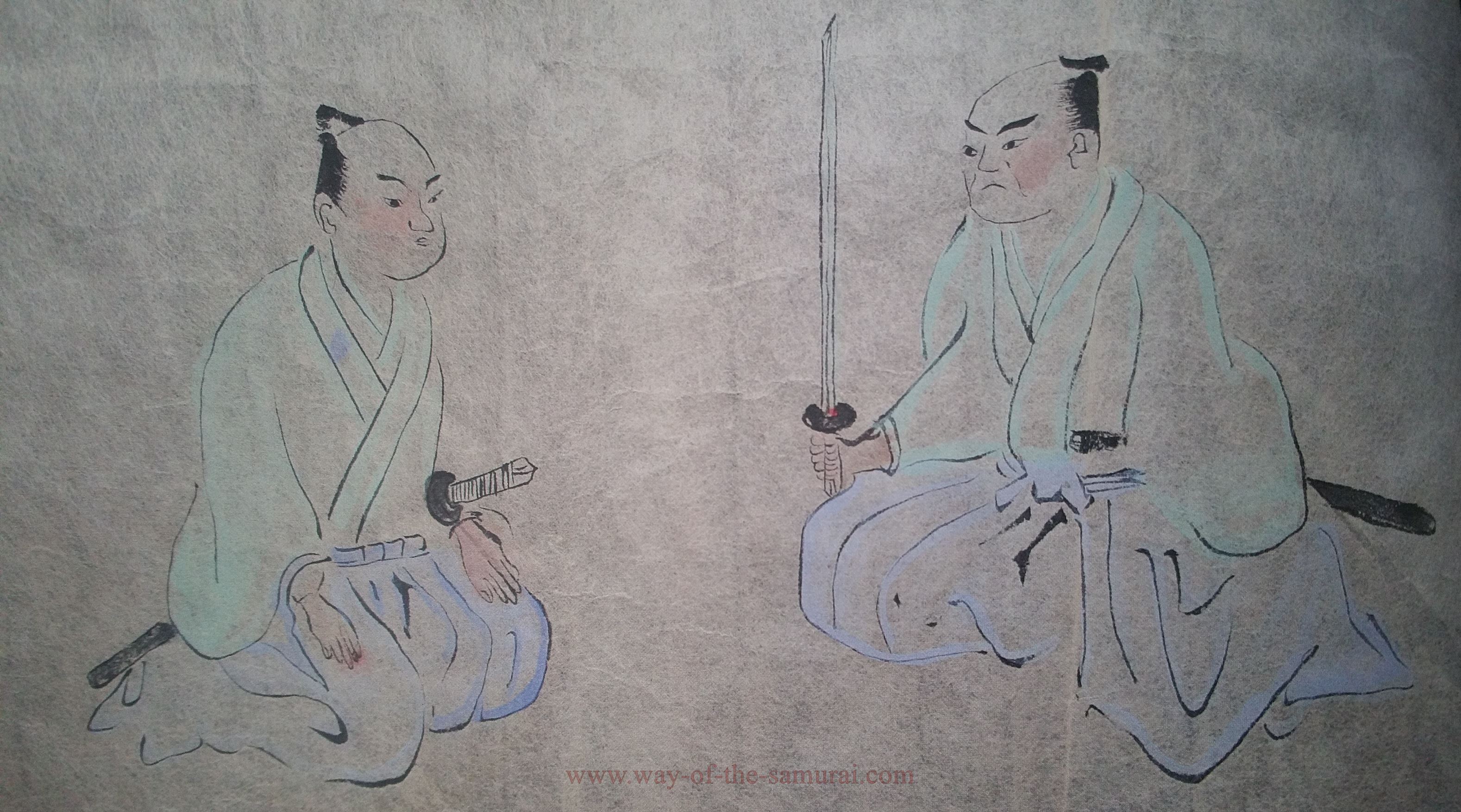
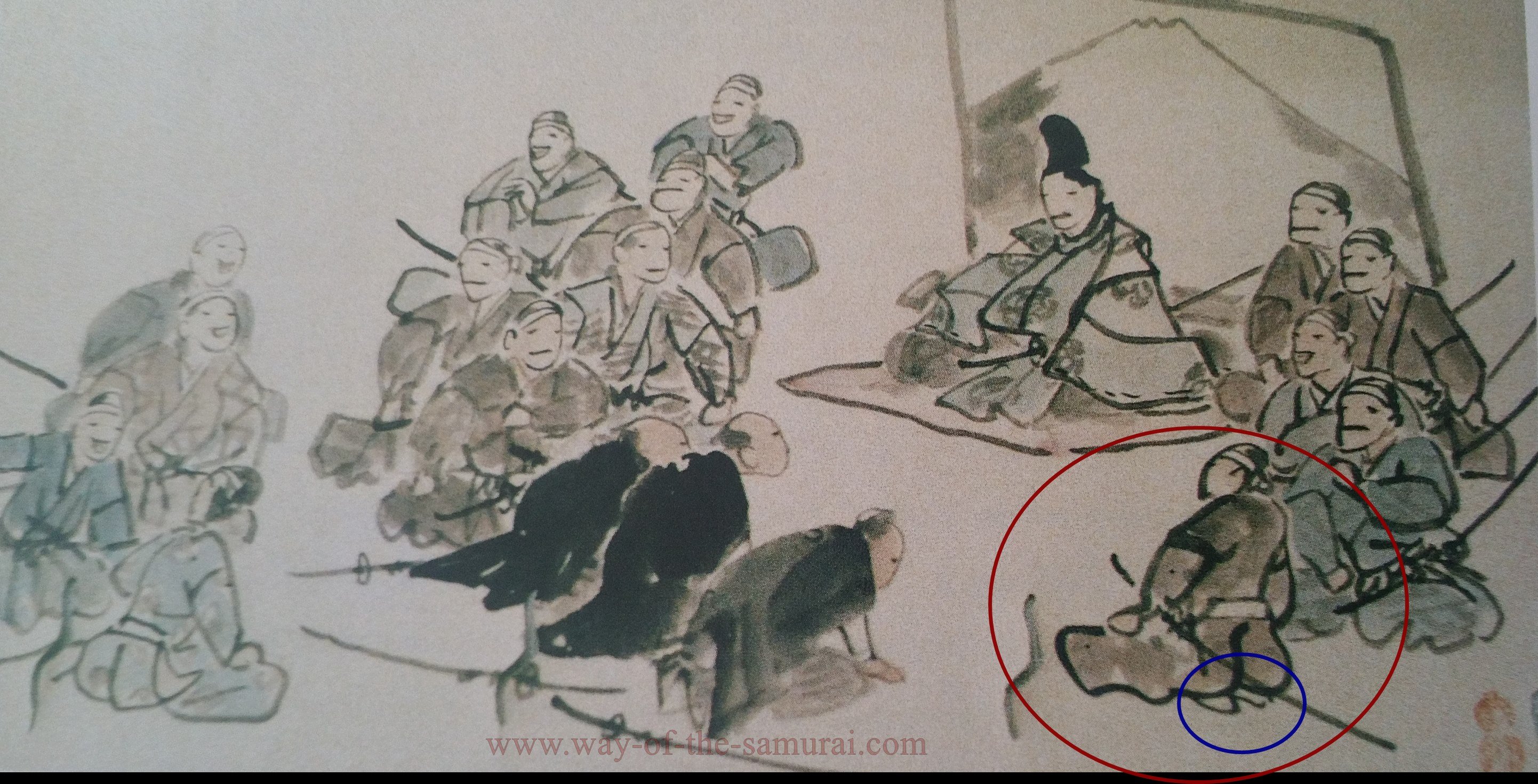
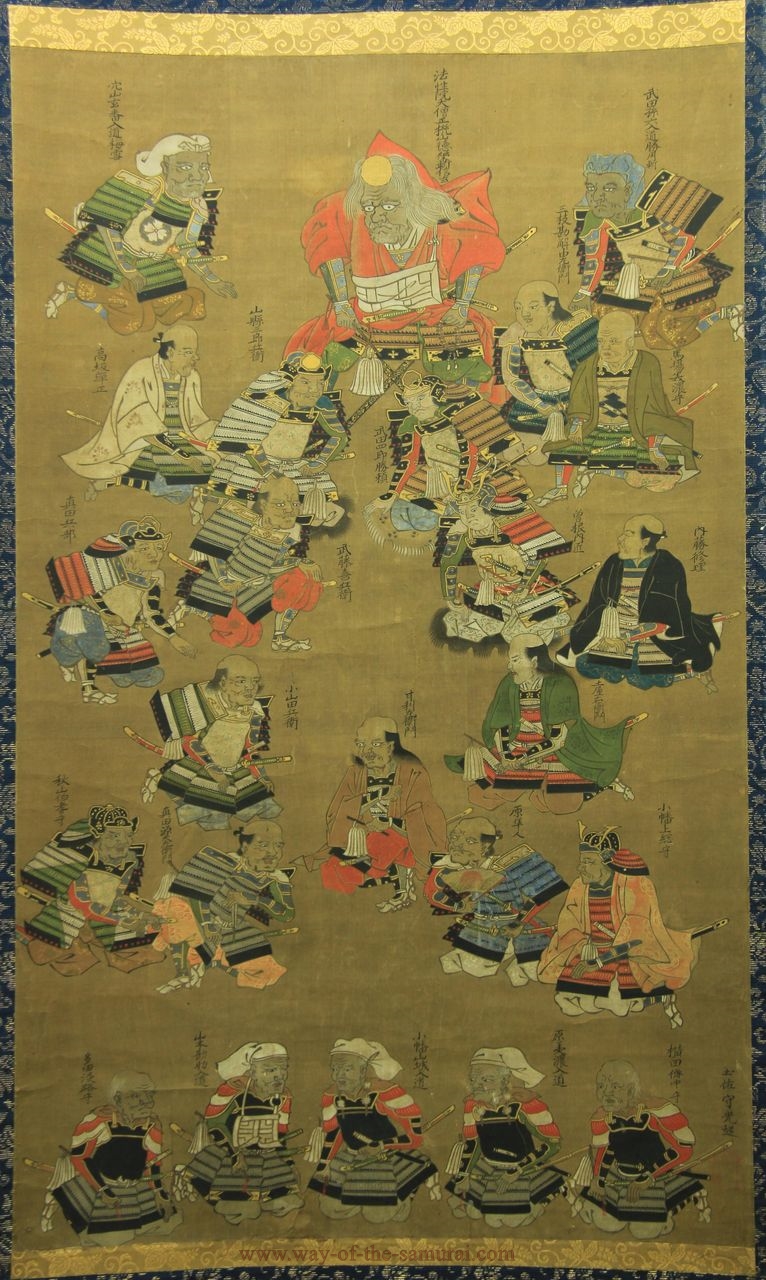
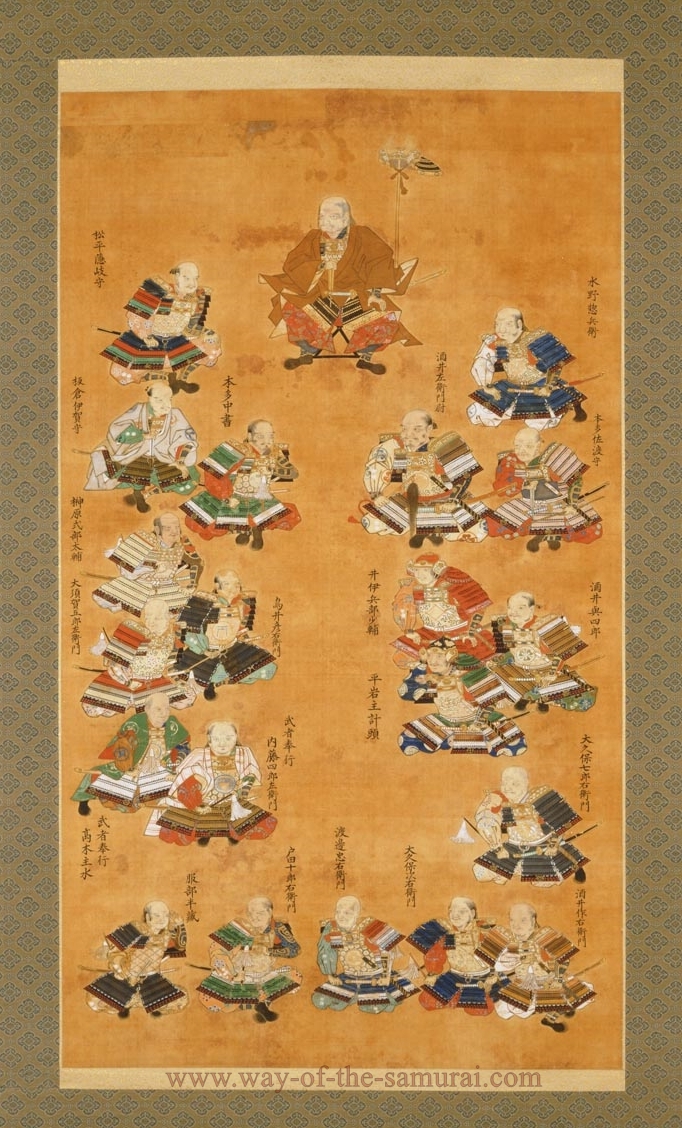
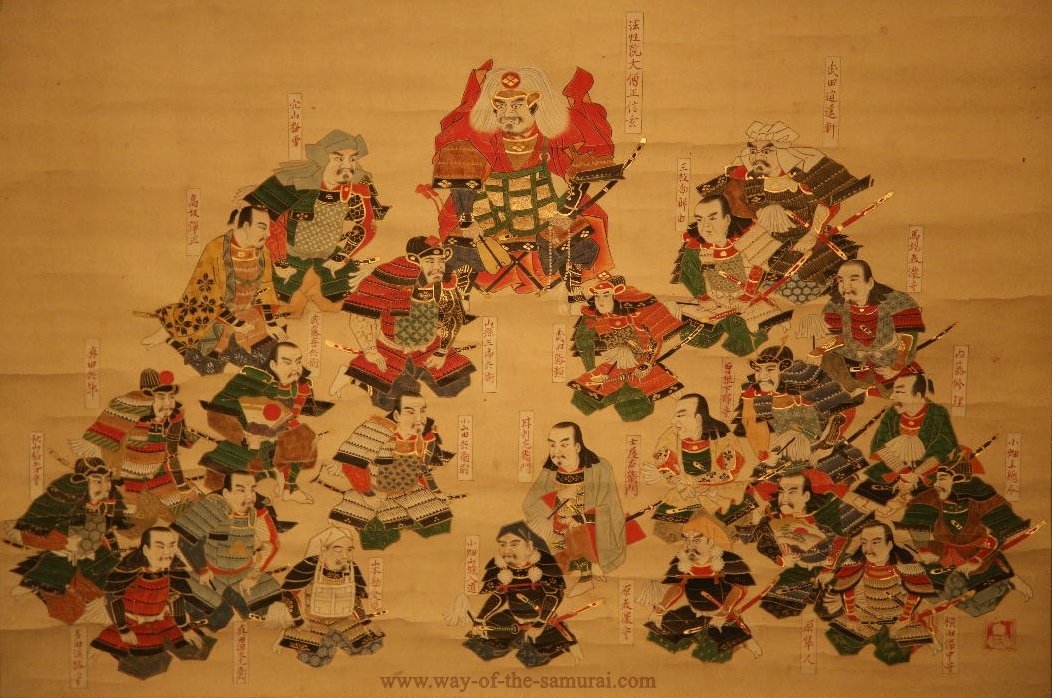
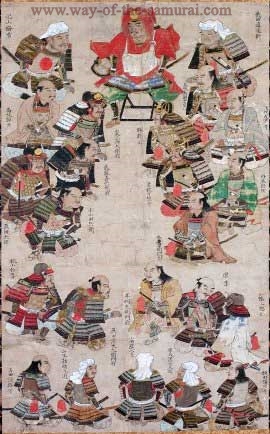
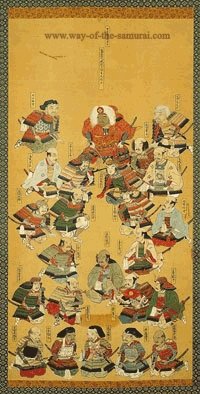
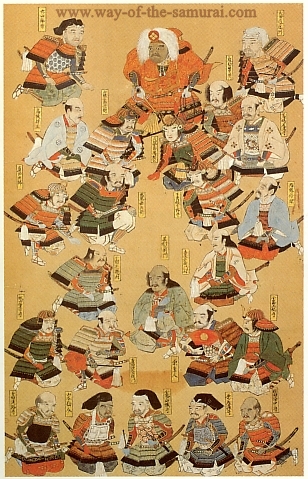
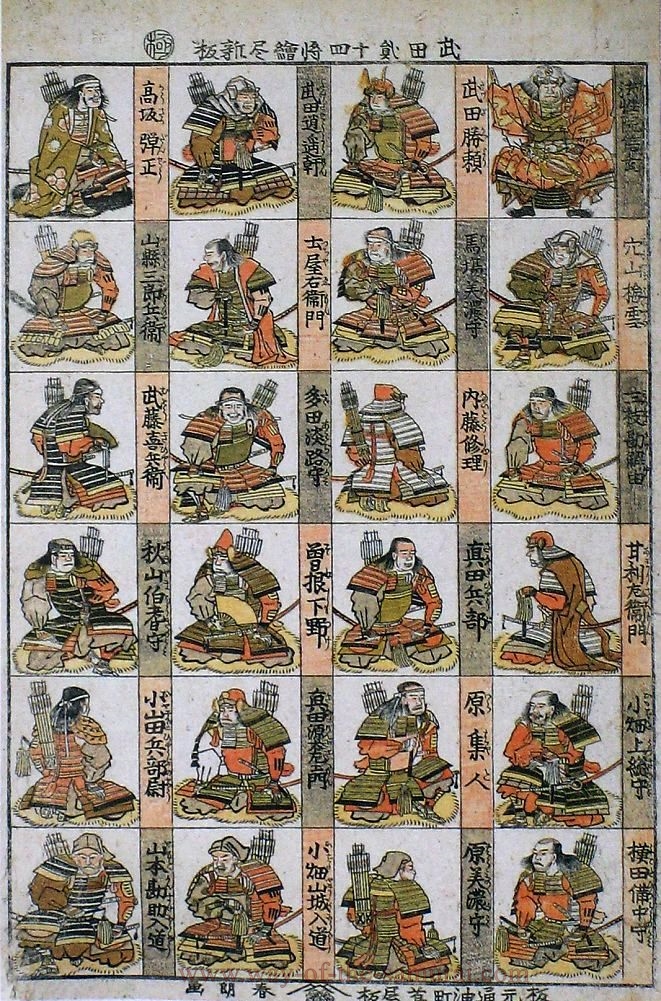
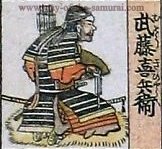
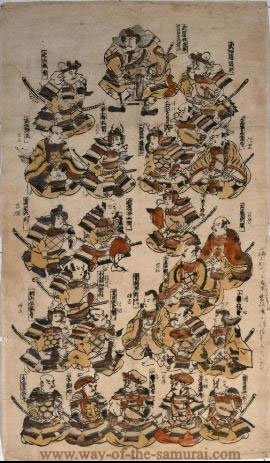
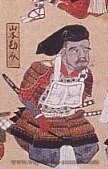
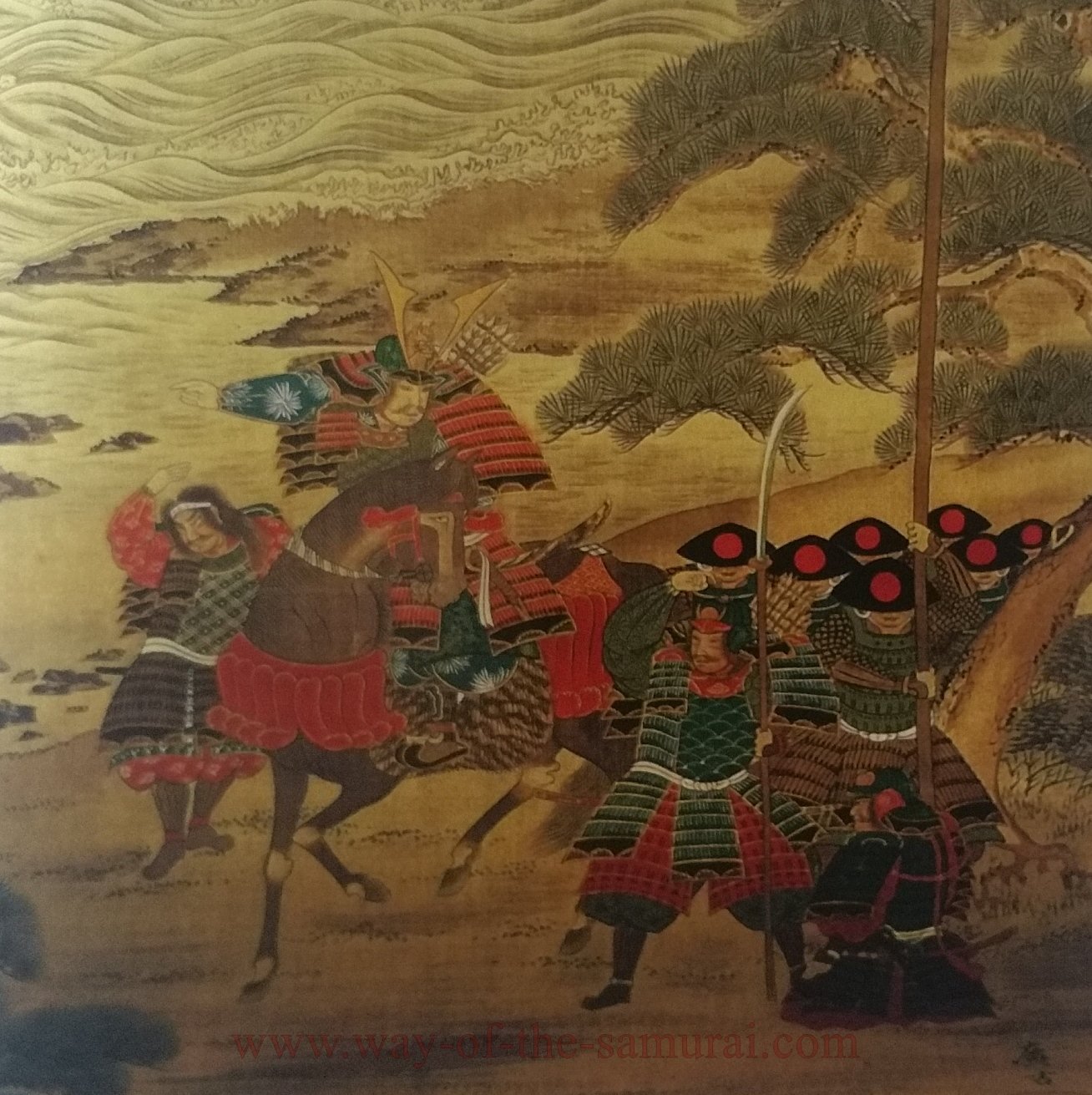
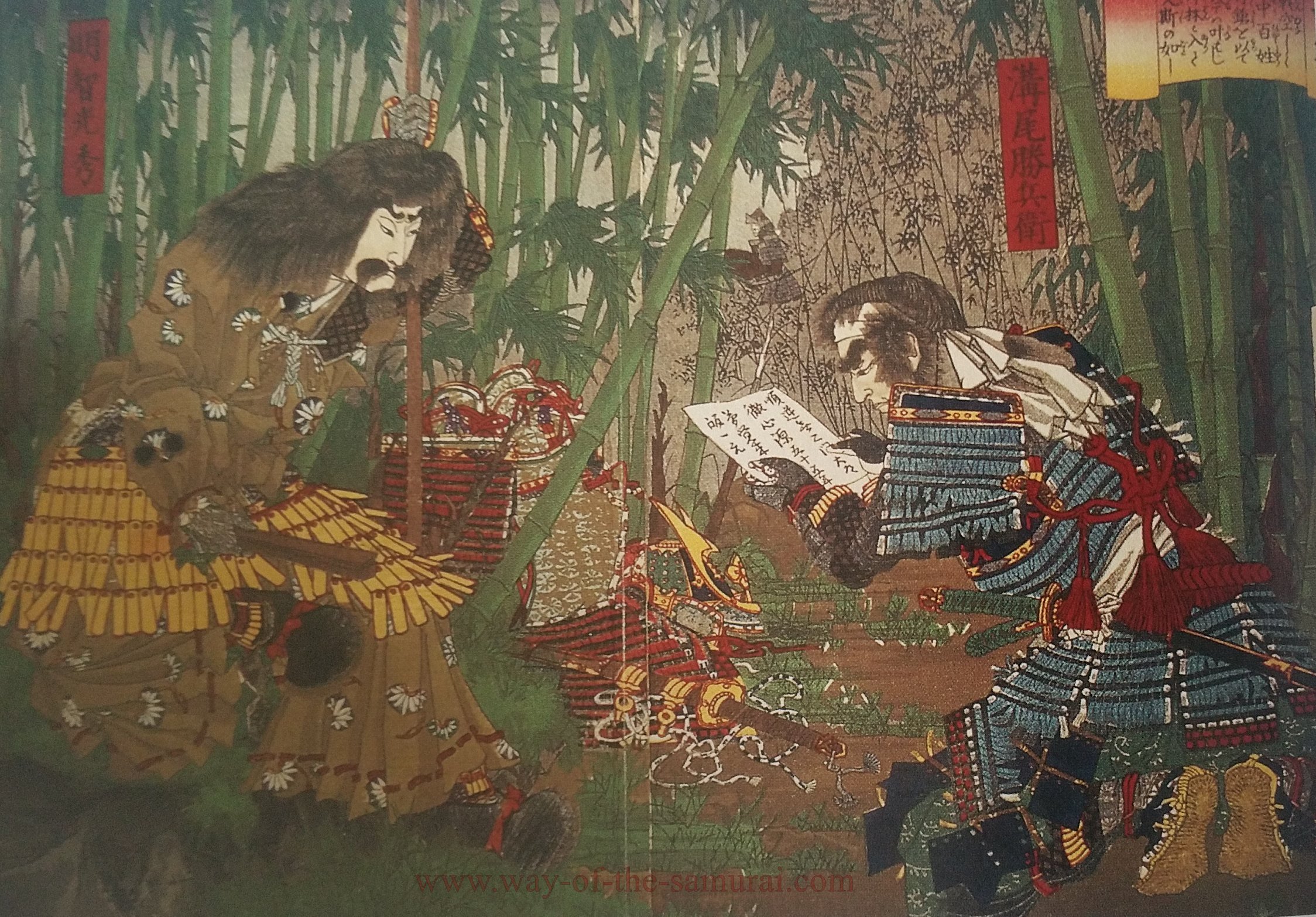
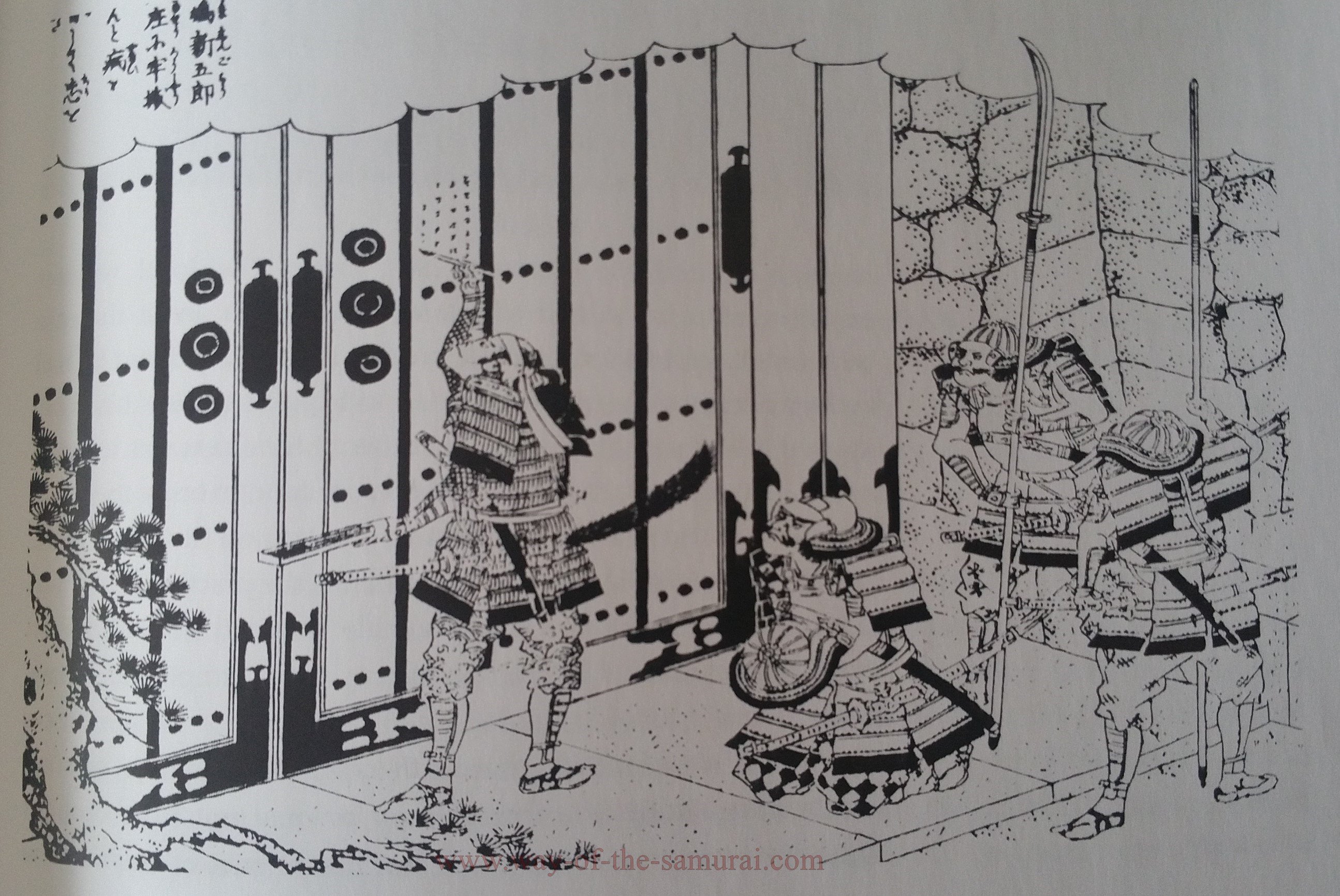




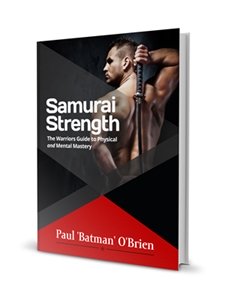
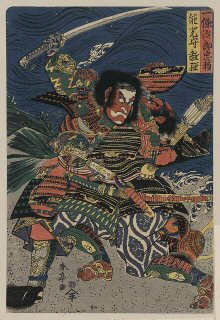
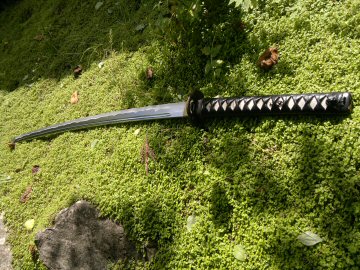
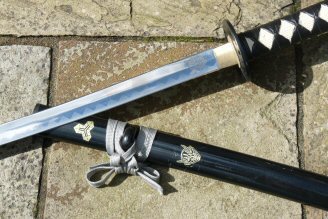
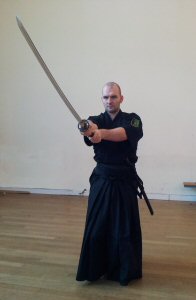
New! Comments
Have your say about what you just read! Leave me a comment in the box below.